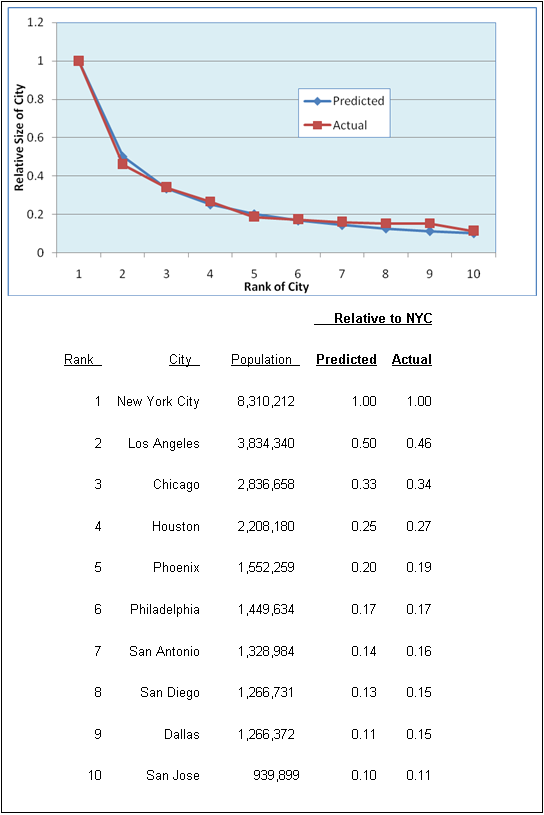Special thanks to Lauren and Professor Stodder for passing on this gem: Math and the City
The article points out a very strange correlation between a city’s population and the city’s size ranking.
“if you tabulate the biggest cities in a given country and rank them according to their populations, the largest city is always about twice as big as the second largest, and three times as big as the third largest, and so on”
Professor Stodder of RPI went one step further and actually checked the results using census data:
It’s known as Zipf’s law and it is eerie, spooky, and countless other words that mean creepy.
“Something is enforcing this invisible law, but we’re still in the dark about what that something might be. “
The article then digs deeper and talks about resources within the city. Gas stations (a decent indicator of energy consumption?) appear less frequently in bigger cities (per person), this is also true with roadways. So the bigger the city, the more efficient (this may be the wrong word choice) that city performs. THEN, we learn that the same is true for organisms. The article compares Mice to Elephants. Cells WITHIN those organisms have vastly different rates of energy consumption compared to their size (think economies of scale), but those same cells when removed from the animal show the same rates of metabolism. Weeeeeird? Yes.
“These numerical coincidences seem to be telling us something profound.”
Then we take a step from eerie coincidence to deeply philosophical as the researches realized that the metabolic needs of an animal increase in size at nearly the same percentage rate as a city’s needs for gas stations increase as they grow in size. All this without any real outside influence… it just happened naturally.
Math is freakin’ sweet.

This sounds like something Richard Florida might be able to explain!
This is so strange
This is mind-blowing! AAHHHHH! I need a mop!
do you have a source for that data?
http://www84.wolframalpha.com/input/?i=United%20States the first 4 look close, but the trend falls away pretty quickly.